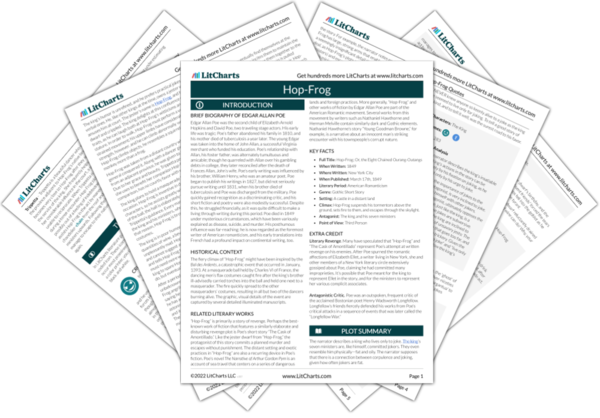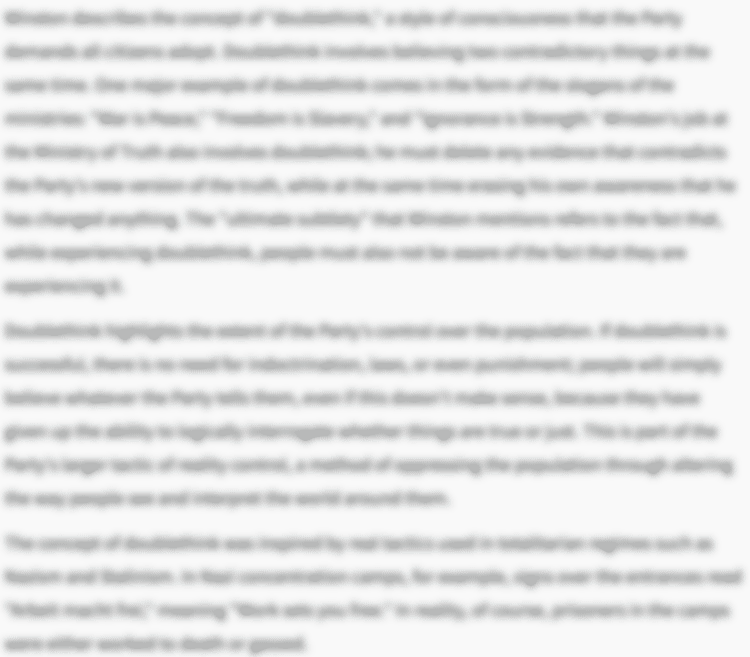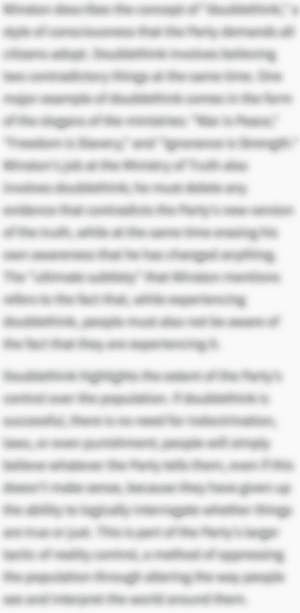Chains symbolize the anguish the jester Hop-Frog experiences in his captivity. After Hop-Frog is forced to drink wine and his companion Trippetta is struck by the king, the jester plots revenge, aiming to subject the king to the same sadistic treatment. Hop-Frog’s plan involves burning his tormentors alive while they are dressed in flammable costumes. His use of chains is fitting; his captors are shackled to their extreme punishment, just as he was bound to his profound suffering.
At the end of the story, Hop-Frog ascends a chain to safety, emancipating himself using a tool that once bound him. In this sense, though the chains symbolize Hop-Frog’s captivity and anguish, they also symbolize a clear route to liberation; Hop-Frog breaks out of his figurative chains and turn the tables on his captors at the end of the story, liberating himself and exacting revenge in a single act.
Chains Quotes in Hop-Frog
Soon after this, the king and his seven friends having reeled about the hall in all directions, found themselves, at length, in its centre, and, of course, in immediate contact with the chain. […] The dwarf, who had followed noiselessly at their heels, inciting them to keep up the commotion, took hold of their own chain at the intersection of the two portions which crossed the circle diametrically and at right angles. Here, with the rapidity of thought, he inserted the hook from which the chandelier had been wont to depend[.]

Unlock explanations and citation info for this and every other Hop-Frog quote.
Plus so much more...
Get LitCharts A+









